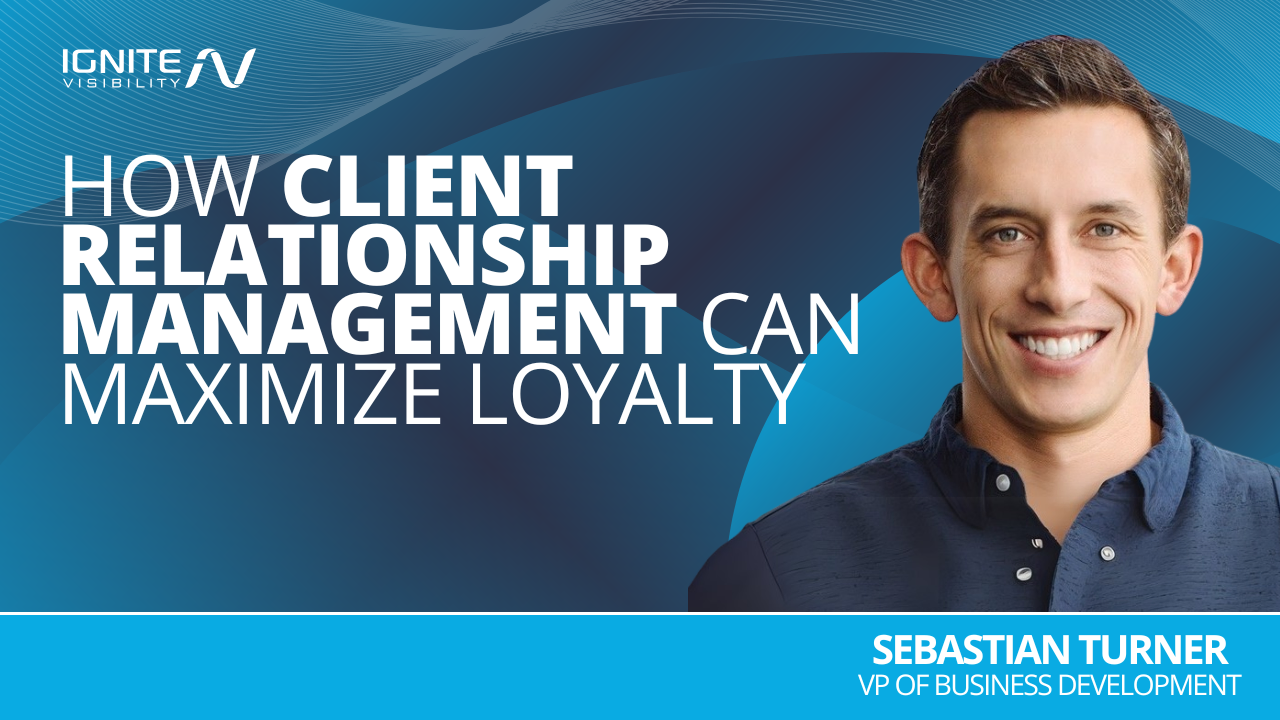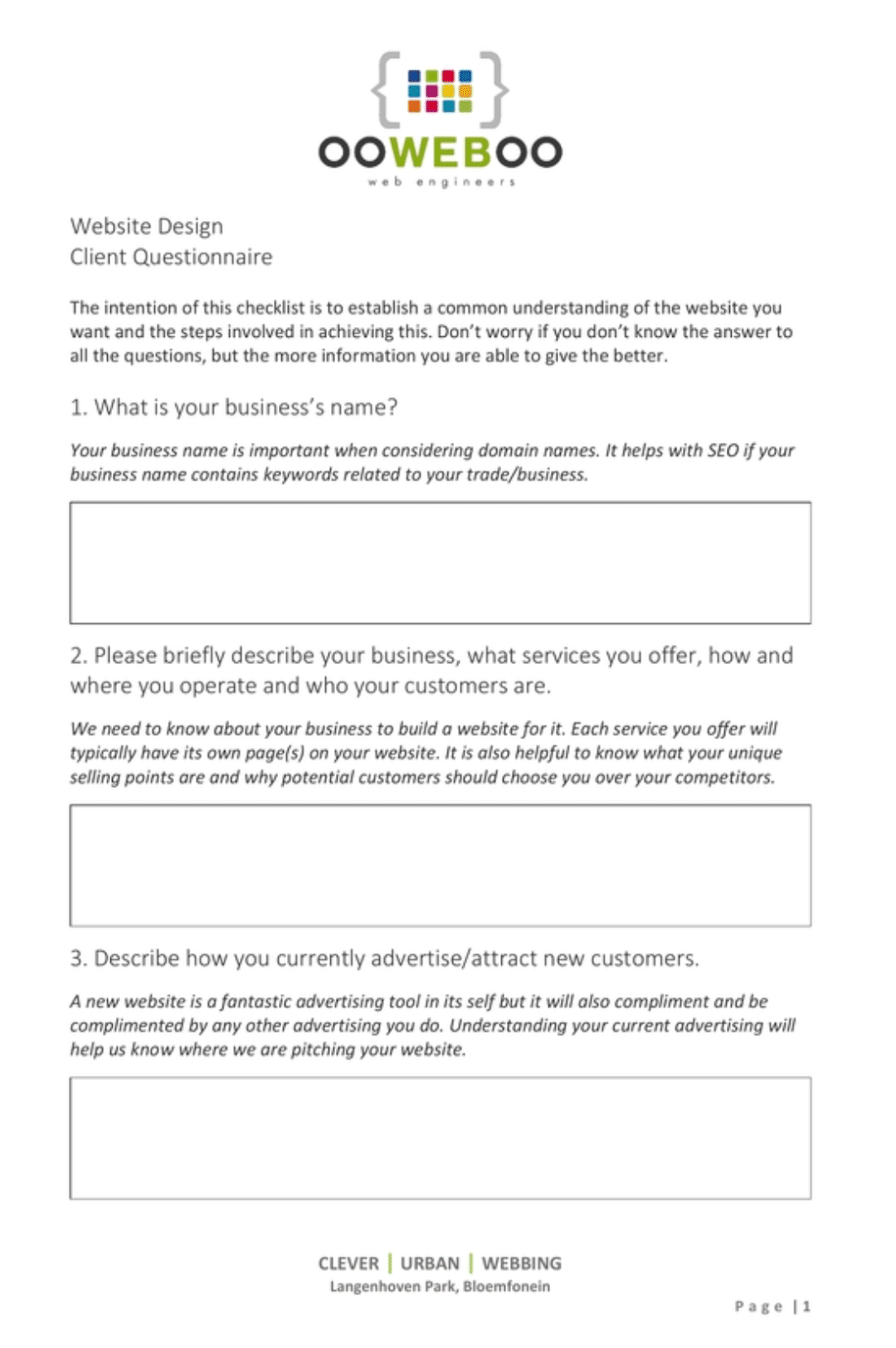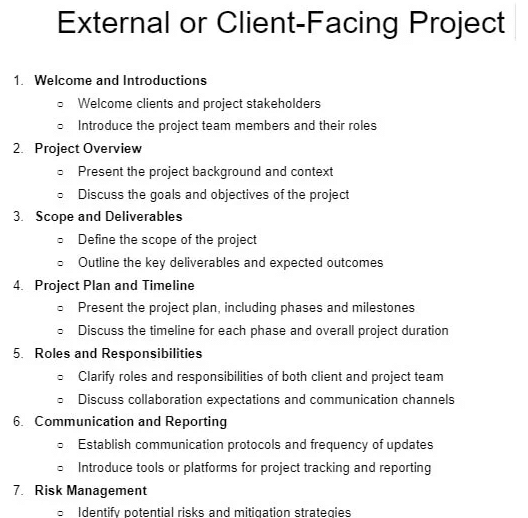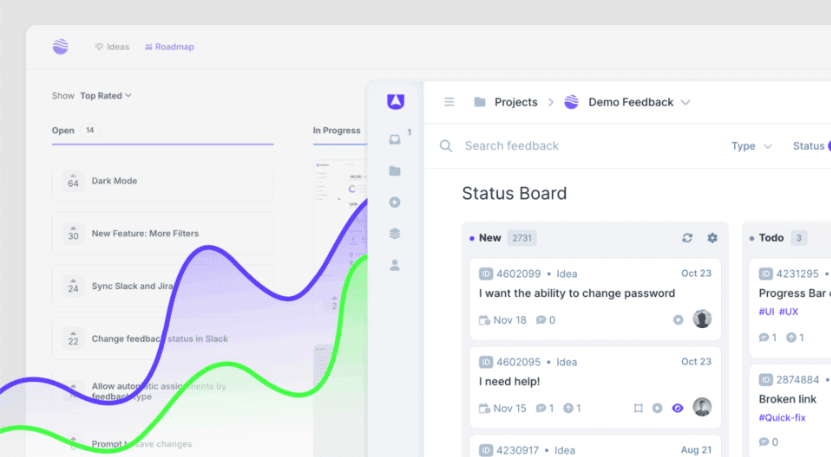
When working to maximize profitability and customer lifetime value, while keeping your clients consistently happy, client relationship management is crucial. Knowing how to build relationships with clients the right way can help you keep your clients returning to you and boost your brand’s overall reputation.Fostering client relations and setting clear expectations are key in building meaningful, long-lasting relationships. Otherwise, poor communication with your client base can easily lead to a loss of trust and, subsequently, revenue.
In this blog, Sebastian Turner, VP of Business Development, will explore client relationship management, including managing client expectations and some client relationship management best practices that can help you succeed in your efforts in the long term.
What You’ll Learn:
- Why Clear Client Expectations Matter
- Identifying Client Needs: Uncovering the Foundation for Success
- Onboarding and Scope Setting
- Communication Frameworks and CRM Integration
- Relationship-Building Skills and Partnership Models
- Managing and Exceeding Client Expectations
- Delivering Value and Building Trust Over Time
- Feedback Loops and Continuous Improvement
- Maximizing CRM Tools for Long-Term Success
- FAQs
My Expert Opinion on Client Relationship Management
Even if you know how to attract new clients to your business, customer retention can be especially challenging. However, it’s more than worth it to work to retain customers, as keeping customers offers more benefits than simply bringing in new ones.
According to recent statistics, repeat customers spend around 67% more than new ones, and American businesses have the chance to save more than $35 billion every year by prioritizing customer satisfaction and delight.
In short, the benefits of client relationship management make these efforts essential in helping your business flourish. The key is knowing how to build customer relationships and maintain them using the right practices and client relationship partner tools.
Now, let’s look at how to manage client expectations and meet or even exceed them with your client relationship management efforts.

Why Clear Client Expectations Matter
From day one of client engagement, clarity when it comes to client expectations is everything. Knowing what your clients expect from you and what you can realistically deliver will prevent scope creep that might otherwise lead to the unexpected expansion of a project, from additional tasks to general delays and increased costs.
Knowing what clients expect from you from the start will also make it easier to align your services with these expectations, increasing the likelihood of leaving clients consistently satisfied.
Trust is essential in building client relationships, as people want to know that they can turn to a brand to meet their needs before committing. They want the companies they do business with to show that they value the customer experience and take input from the clients they serve, leading to more loyalty.
Who Holds the Power in a Service Relationship?
In a service relationship, the service provider and the recipient each hold power in different ways, with both parties often sharing power in a dynamic relationship.
For example, service providers can control:
- The specific services they offer and their features
- Resources and processes required to provide the services
- Information and expertise behind the services
Meanwhile, recipients have control in the following ways:
- Choice and the ability to go with competitors
- The chance to provide feedback through reviews and affect a business’s reputation
- Some contractual control when establishing a relationship
Building a strong relationship with clients can ensure that both parties share power and collaborate effectively, preventing an imbalance of control.
Identifying Client Needs: Uncovering the Foundation for Success
The very first step in client relationship management involves specifying the client’s needs.
To do so, you can begin by developing and asking certain discovery questions. Some of these questions might include:
- What are some key pain points you are facing right now?
- What unmet needs would you like a service provider to fill?
- What is the most time-consuming task of the day for you?
- What goals do you hope to achieve within [specific timeframe]?
- How would the ideal solution resolve your issues?
- In what ways have previous solutions failed you?
- What is your allotted budget for these services?
To bring in more customers and drive engagement, consider implementing a downloadable discovery questionnaire as a gated content upgrade.
To better align your company and clients’ goals, take some time to dig deeper into the clients’ industries and specific segments to identify certain challenges and opportunities. A Strengths, Weaknesses, Opportunities, and Threats (SWOT) analysis could also help determine where clients stand and how you can resolve certain issues.
To help you effectively identify client needs, you can implement customer relationship management (CRM) solutions to collect data around your audiences, determining their precise wants and requirements.

Onboarding and Scope Setting
Based on the information gleaned from discovery questions and your CRM data, you can determine how to set realistic expectations to optimize client relationship management.
When setting some initial goals, decide on:
- The specific problems you’re trying to solve for your clients
- The key performance indicators (KPIs) and metrics to track
- Timelines for achieving the desired results
- How a project aligns with the client’s goals and objectives
- Protocols for communicating with clients, including the designated channels and frequency
To assist with onboarding, you can use certain tools like in-app onboarding solutions that give product tours and walkthroughs, email marketing platforms, chat support, and analytics tools.
Another way to facilitate onboarding and scope-setting is to use kickoff meeting agendas. These agendas typically include project overviews, introductions, timelines, deliverable, and roles and responsibilities to establish a project’s overall scope.

There are many ways to use scope-setting language in service-level agreements (SLAs) and other communications, such as:
- “This agreement outlines the specific services provided, including [services list].”
- “We are committed to delivering the following essential outcomes: [List of goals].”
- “Thanks for the suggestion! Adding [new task or feature] will involve a separate discussion to assess its potential effect on the project timeline and budget.”
Communication Frameworks and CRM Integration
To continually engage your clients, it’s important to establish an effective communication framework.
For example, you could engage in weekly reporting to keep clients up to date on progress and show how your services are helping them achieve their short- and long-term goals.
Also, decide on the right meeting cadence based on your and your clients’ goals. Daily meetings are great for providing quick updates and addressing more urgent issues, while weekly meetings can provide more meaningful project updates. Alternatively, you might use monthly or quarterly meetings to discuss long-term progress and adjustments to strategies.
Escalation plans are good to have in place with pre-defined processes detailing how to resolve issues that you might not be able to address at initial levels of support. Determining which individuals and teams are responsible for resolving each issue can give problem resolution a clear direction and more effectively mitigate risks.
If you want to automate communications and document expectations, you can use certain cross-channel tools like Slack, Asana, and CRM systems.
Keep in mind that consistency builds credibility, as the more responsive you are in communications, the more your clients are likely to see that you’re moving toward their goals.

Relationship-Building Skills and Partnership Models
Effective client relationship management requires the development and practice of certain essential skills, including soft skills like:
- Active Listening: This skill involves giving ample attention and focus to someone speaking, listening for the intended meaning behind the conveyed message to better understand what the speaker is seeking.
- Empathy: Looking at things from the client’s perspective, putting yourself in their shoes, will help you better understand their pain points and experience with your service, which can guide your interactions to appeal more to each client’s wants and needs.
- Tone Matching: Adjusting your communication style to better match that of the client can further express understanding and empathy, building a stronger connection.
- Clarity: Make sure communications are concise, easy to understand, and simple, eliminating any ambiguity that could lead to a potentially serious misunderstanding.
In demonstrating these skills, consider your CRM like a client relationship partner helping you gain more insights into your clients and what they want from you.
Additionally, think about the specific scenarios when a service provider would lead vs. the client. For instance, a service provider would lead communications when launching a new product or brand and informing the client about this development, while clients would take the lead when discussing their unique pain points, goals, and progress.
Ultimately, it comes down to knowing when to speak vs. listen in a conversation with your clients.
Managing and Exceeding Client Expectations
In managing client expectations, you should try to exceed them whenever you can to truly impress your clients.
As you discover how to manage customer relationships, you can exceed expectations by providing proactive reporting, showing that you are always monitoring progress and staying on top of the client experience while working toward their goals. These reports could reveal surprise wins that the client may not have expected.
Also, showcase any instances of overdelivery with comprehensible metrics and clear progress, which can indicate to your clients that you are working to do even better than the expectations you set.
Managing Scope Creep
Conversely, if you recognize instances of scope creep, there are some situations when it’s okay to push back or renegotiate with clients to manage expectations.
For instance, you might push back or renegotiate if a client makes a request that requires a fundamental change to the project, its timeline, and its goals.
You might also want to push back when you don’t have the resources to spare to accommodate a new request, establishing what the client can realistically expect based on the resources available to you.
Some requests may also simply go against what’s realistically doable, go against your company’s best practices, or lead to compromised quality.
To better account for expectations and and more reliably meet them, build an “Expectations Ladder” framework, which could look something like:
- Baseline: Here, you would establish an understanding and foundation for client relationship management.
- Desired: Work toward achieving the client’s desired goals and objectives with high-quality services and frequent reporting.
- Delighted: Aim to delight the client with consistently great services and keep them returning for more, potentially showing appreciation and rewarding loyalty.
Delivering Value and Building Trust Over Time
As a service provider, you should go beyond simply delivering tasks and achieving goals—align yourself as your client’s thought partner. Show that you empathize with the client and that their success means your success.
In delivering value and earning your clients’ trust, don’t shy away from mentioning instances of underperformance. Acknowledge that things can (and in many cases will) go wrong, and that you’re working toward improvement. Indicate the steps you’re taking to prevent future similar issues, and keep clients updated on your improvement.
Remaining transparent and working toward continuous improvement can go a long way in building trust over time, keeping your brand in a positive light as you learn how to recover.
Feedback Loops and Continuous Improvement
In working toward gradual perfection, use feedback loops to determine how clients feel about your offerings and progress, and use that data to inform ongoing efforts to improve.
When gathering feedback, marketers can incorporate feedback systems into their process, including surveys, interviews, and Quarterly Business Reviews (QBRs).
In closing the feedback loop, clearly indicate that client input has influenced your moves to optimize your offerings and business model, making the client feel truly valued. Expressing gratitude and making the necessary adjustments to your offerings and business will build more trust and lead to more retention.
To help build and close those feedback loops, there are multiple tools you can use, such as:
- Typeform and SurveyMonkey for creating and issuing conversational surveys
- Userback feedback software that helps collect and manage feedback, including visual feedback with annotations and video recording
- HubSpot Service Hub for Smart CRM to track feedback and customer interactions.

Maximizing CRM Tools for Long-Term Success
With the help of the right CRM tools, you can realize the benefits of client relationship management, including:
- Increased Retention: By effectively addressing your clients’ needs and providing exceptional service, you can retain more high-value clients.
- More Referrals: People delighted by their experience with your company are likely to become brand advocates and refer you to others, especially when you implement a referral program.
- Enhanced Expansion: As clients request more services and your business continues to thrive, you’ll be able to expand your offerings along with your business as a whole.
CRM software can help you learn how to build relationships with clients, with many options out there that can support every phase of the customer lifecycle.
Here is a breakdown of some of the best CRM tools available and their pros and cons:
| CRM Tool | Best for | Pros | Cons |
| Salesforce | Large enterprises with complex business requirements |
|
|
| HubSpot CRM | Small and medium-sized businesses |
|
|
| Zoho CRM | Small to medium-sized businesses |
|
|
| Pipedrive | Sales teams in need of effective pipeline management |
|
|
| Zendesk Sell | Teams with a focus on customer service |
|
|
FAQs
1. What is fostering client relations?
This refers to the process of establishing and maintaining long-term relationships with clients to keep them continually coming back to a business for additional products or services. Businesses can achieve this by meeting or exceeding client expectations with strong relationship-building skills.
2. How do you build relationships with clients?
There is a lot that goes into building a client relationship that lasts, including managing client expectations, developing relationship-building skills, effective onboarding and scope setting, CRM integration, and exceeding expectations when possible to keep clients loyal.
3. How do you manage client expectations?
Managing client expectations involves understanding those expectations and working to meet them to the best of your abilities without overpromising. Give your clients realistic expectations, but work to exceed them through superior offerings and customer service.
4. Who holds the power in a service relationship?
Depending on the situation and the nature of the relationship, different parties could have control within a service relationship, including the service provider, the client, or both. The service provider tends to have more control over the services and how clients can use them, while clients have the ability to choose, offer feedback, and impact the service provider’s reputation.
5. What are the benefits of client relationship management?
There are many benefits of client relationship management, such as:
- Improved customer satisfaction
- Increased sales efficiency
- Optimized data organization
- Better team collaboration
- Repeat business from customers
6. What are customer relationship best practices?
To successfully connect with your customers, here are some client relationship management best practices:
- Gain a deep understanding of your customers, including each segment of your audience
- Communicate effectively through multiple channels
- Provide top-tier customer service and superior offerings
- Personalize the customer experience
- Utilize the latest technology
Turn to Ignite Visibility for Effective Client Relationship Management
With a better idea of how to manage customer relationships and by adhering to customer relationship best practices, you may have an easier time connecting with your clients. At the same time, you could benefit from working with a client relationship partner that can help you build a lasting connection.
With Ignite Visibility’s help, you can:
- Identify your target audiences
- Determine how to manage client expectations
- Integrate a reliable CRM
- Use the right language and frequency to connect with customers
- Drive more conversions and sales
- Retain loyal customers
- And more!
Get started with us today to learn more about how we can help you build long-lasting client relationships and more.
